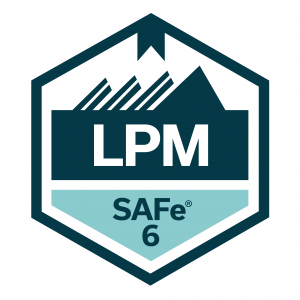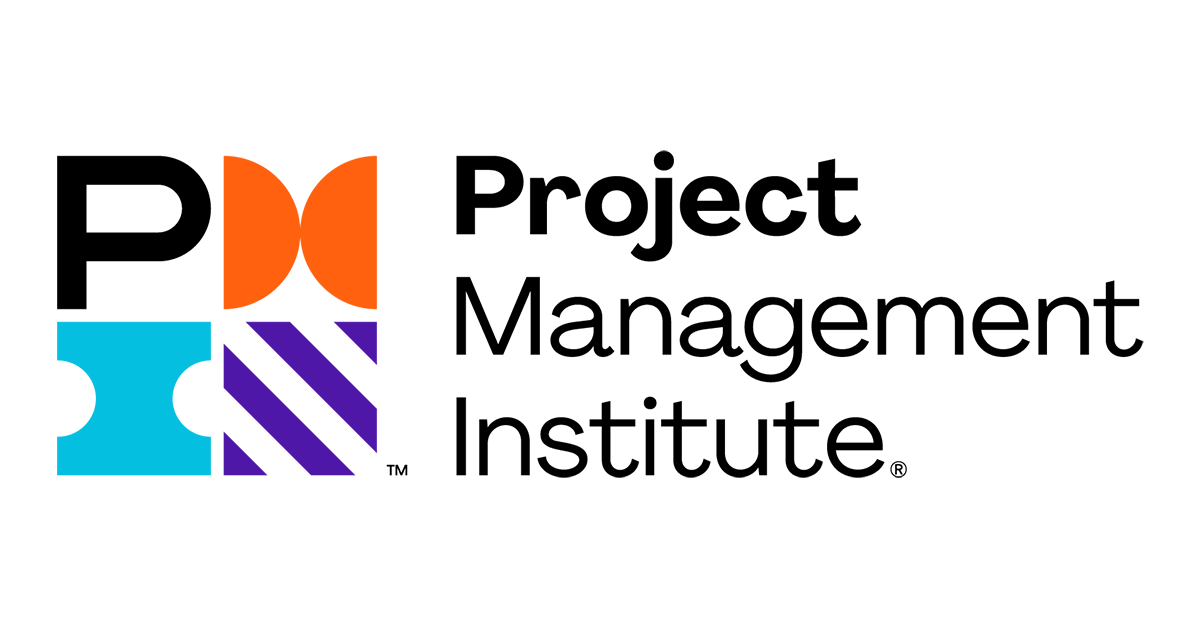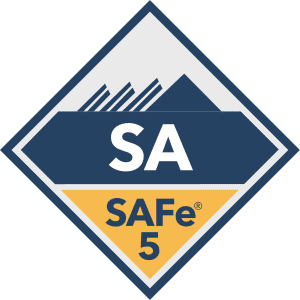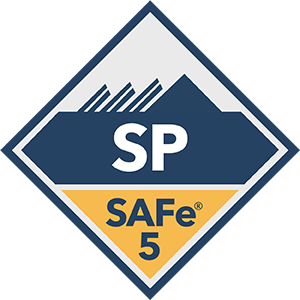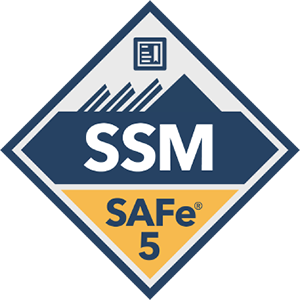No upcoming trainings in this city..!
SAFe Lean Portfolio Management Course
In this course, attendees gain the practical tools and techniques necessary to implement the Lean Portfolio Management functions of Strategy and Investment Funding, Agile Portfolio Operations, and Lean Governance. Participants also have the opportunity to capture the current and future state of their portfolio with the Portfolio Canvas tool and identify important business initiatives for achieving the portfolio vision. Participants establish portfolio flow with the Portfolio Kanban and prioritize epics for maximum economic benefit. The course also provides insights on how to establish Value Stream Budgets and Lean Budget Guardrails and measure the Lean portfolio performance.
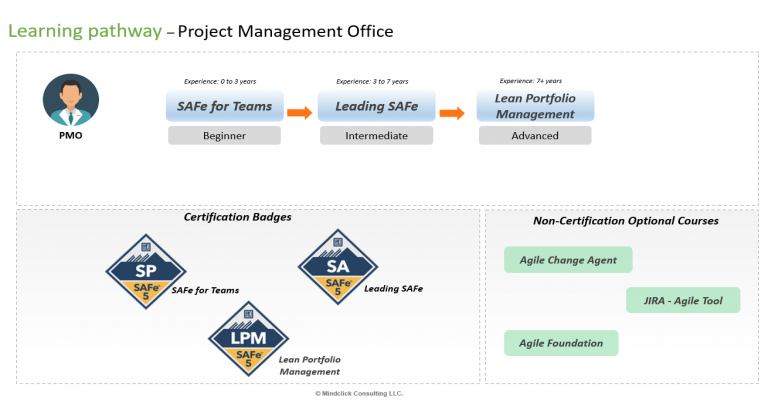
Key Features of SAFe Lean Portfolio Management LPM 5.1 Training and Certification
- 2 Days Online/Classroom Training
- Practical Knowledge with Role Plays, Games, Simulations, etc.
- Training by experienced SPCs (SAFe Program Consultants)
- Scaled Agile Academy Certification Exam Fee Included
- 14 PDUs from PMI (Project Management Institute)
- 5 e-books on scaling Agile
Trainings Scheduled
Lean Portfolio Management (LPM) is a two-day, interactive course that teaches the practical tools and techniques necessary to implement Strategy and Investment Funding, Agile Portfolio Operations, and Lean Governance.
Participants learn to capture the current and future state of their portfolio with the Portfolio Canvas tool, and identify important business initiatives for achieving the portfolio vision. Participants also learn how to establish portfolio flow with the Portfolio Kanban and prioritize epics for maximum economic benefit. Additionally, the course provides insights on how to establish Value Stream Budgets and Lean Budget Guardrails, and how to measure the Lean portfolio performance. An additional 1-day workshop is available to help enterprise teams get started with LPM in their organization.
Who Will Benefit?
This course is designed for leaders and influencers who are responsible for the Lean Portfolio Management function.
Examples include:
- Executives and leaders (CIOs, CEOs, CFOs, CTOs, and VPs)
- Portfolio managers
- Enterprise architects
- Product managers and solution managers
- Business owners
- Program office personnel
- SPCs and enterprise Agile coaches
- Human resources
- Epic owners
- RTEs
Topics Covered
- Introducing Lean Portfolio Management (LPM)
- Establishing Strategy and Investment Funding
- Applying Agile Portfolio Operations
- Applying Lean Governance
- Implementing the LPM function
- SAFe LPM teaches participants to align with the common business vision in the organizations where they are employed that has different departments and multiple business units.
- Each portfolio will arrive at a different result and a trained professional will know the tactics to measure the outcome and take the company to the next level by merging all results in one place.
- Lean portfolio management certification training throws light on collaborating 3 main portfolios namely the strategy and funding, lean governance, and agile portfolio operations. This will lead the organization to invest correctly and produce results in the desired direction.
- It will become easy for trained professionals to enable releases frequently. Work gets divided into chunks to save time and money.
- Defects can be reduced and thus quality is improved.
- It offers enhancement in ecosystem relationships.
- Productivity increases, thus both the employee and the company become happy and rich.
KMP I and KMP II one of the most productive learning for flow management and understanding the context of WIP limit. I am very happy to join Mindclick consulting training and the level of learning is immence. Thank you.
B | Brian Goldberg,Directior (Technology) |
If you want to learn how to successfully implement agile or want to improve how your organization delivers value, I highly recommend Mindcick consulting to guide you on your journey. I have had the privilege and pleasure of attending sought after sessions on SAFe and every time.
A | Abhinav Verma,Enterprise Agile Coach SAFe Program Consultant and Trainer |
I recomend Mindclick as a course instructor for any Agile certification. Effective communication, clear presentation of information, engagement with the students, clear guidelines for the certification exam.
J | Juan Fernando Rojas,Azure Consultant at Codit - CSM® - SA 5 |
Very knowledgeable and skilled practitioner and instructor on Agile. He took the time to ensure that all my questions were answered, even after the course had ended. Definitely will ask for him again for my next Agile course.
K | Kamal Solanki,Program Manager at Government of Manitoba |
Mindclick have pool of excellent coaches with a very good knowledge in SAFe. The flow is perfect and helps a lot to understand the concepts. Moreover, they provide real-world use cases based in his experience and adapted to his public background.
M | Mohamed A. B. CAMARA,Engineer - Cloud, Infratructure and Technical Architect |
Attended the scaled Agile Leading SAFe training with Mindclick Consulting instructors. Their knowledge of the content and presentation skills was amazing. They were able to put things into perspective when applying the framework to a company process and structure.
T | Thasigan Pillay,Senior Project Manager at Nedbank | SAFe® | ITIL | CSM |
Attended the Leading SAFe course run by Minnclick and was super impressed with their knowledge and experience of implementing SAFe. They explain the concepts in a way that makes it simple and given the challenges of COVID-19, their virtual classroom manner & approach were outstanding.
G | Gareth Pile,Digital Transformation | Business Automation | Cloud Technologist | SAFe Program Consultant (SPC) |
I would like to recognize Mindclick after attending the Leading for SAFe certification. Firstly I would like to say that as an Agile Coach, the SPC is extremely knowledgeable on the discipline & his wealth of experience ensures that they utilize practical examples that audience can easily relate.
V | Vinesh Singh,MBA BA Delivery Lead -Nedbank Digital Transformation Programme |
Midclick's training skills were exceptional, their traner's depth of knowledge of the subject matter is extensive. no question could not be answered or explained, thank you sir and look forward to attending another course
E | Enver (Anwar) Mall,Program Manager/Senior Project Team Manager at Nedbank |
He is an awsome trainer with excellent skills of Communication, Coach and a mentor which made me to actually undestand the core concept of what is Safe Agile.
R | Ruchika Sali,Product Architect at The Bargain |
Vikram is an excellent trainer. He uses real life examples in the training, which helps students to understand & memorise the concepts for the exams. He was very punctual and I would highly recommend him as a Trainer and a Coach.
V | Vijay Shah,MBA, SAFe® 5, Digital Transformation & Delivery, ITIL®, PRINCE2® |
I took a two-day training from Vikram for my SAFE 5 SA certification. I was immediately impressed with Vikram's background and experience. His style of coaching and training is very deliberate and fine-tuned to the needs of his clients and students. His explanations are direct and complete.
E | Evan Benjamin,Sr. eDiscovery and Infrastructure Specialist at Complete Discovery Source, Inc. |
It was an amazing Journey having Vikram as instructor for Safe Agile Scrum master Course, he is Skilled, driven and engaged all time. Highly recommended!
N | Nada Nilsen,IT project manager and Scrum Master at Formatika AB |
I had the pleasure to have Vikram as coach for my Leading SAFe course. Vikram is a passionate and highly skilled coach, he can teach by real life example and put theory on context, which heavily help understanding complex concepts
A | Antonio Gallo,Scrum Master - A-CSM | SAFe | CSPO | CPM |
Working with Vikram at Nedbank has been a pleasure, he is very knowledgable, capable and professional. I was also trained by Vikram in the SAFe framework and found his knowledge and insights to be extensive, very practical and motivating.
F | Frederick Botes,Agile Coach/SPC at Nedbank |
Vikram is a fantastic Trainer, very friendly and encouraging. The most useful part of the training was the case studies based on real events that has helped us to gain the right learning required for SAFe POPM course.
A | Alok chaturvedi,CSM, SAFe POPM |

